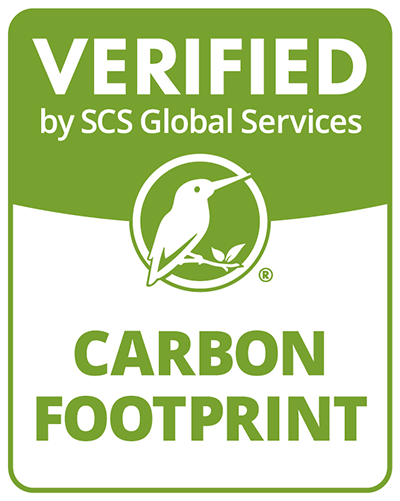Produkt Carbon Footprint
Messung der Treibhausgasauswirkungen über den gesamten Lebenszyklus

- Startseite /
- Dienstleistungen /
- Klimawandel /
- Produkt Carbon Footprint

Team Umweltzertifizierung
Was ist der CO2-Fußabdruck eines Produkts?
Fachmännisch erstellte Product Carbon Footprints liefern solide und transparente Informationen über die Kohlenstoffintensität Ihrer Produkte. SCS bietet die Erstellung von CO2-Bilanzen für Ihre Produkte auf der Grundlage von ISO 14067, PAS 2050 und dem WRI GHG Protocol. SCS verfügt über mehr als 30 Jahre Erfahrung in der Lebenszyklusbewertung (LCA) und kann die Kohlenstoffintensität Ihrer Produkte über den gesamten Lebenszyklus hinweg fachkundig untersuchen, einschließlich Rohstoffgewinnung, Herstellung, Transport und Vertrieb, Nutzung und Entsorgung am Ende des Lebenszyklus. Fußabdrücke von Produkten können Ihren Kunden mitgeteilt werden und können als Grundlage für die Zertifizierung als klimaneutrales Unternehmen dienen, sobald sie verifiziert sind. Ihre nachgelagerten Kunden müssen Informationen aus ihren Lieferketten sammeln, damit sie ihre eigenen Scope-3-Inventare erstellen können. Die Entwicklung Ihrer Produktkohlenstoffbilanz gibt Ihnen die Informationen, die Sie benötigen, um Kundenwünsche zu erfüllen und den mit Ihren Produkten verbundenen Kohlenstoff zu verwalten.
Warum SCS wählen?
SCS Global Services verfügt über mehr als 30 Jahre Erfahrung im Bereich LCA auf höchstem Niveau. Unser hochspezialisiertes und erfahrenes Team verfügt über einen breit gefächerten technischen Hintergrund und nutzt bei seiner Arbeit die neueste Software und Datenbanken, um sicherzustellen, dass die Ökobilanzen vollständig, genau und kostengünstig sind. Fußabdruck für Ihre Produkte gibt Ihnen wichtige Informationen über die vorherrschenden Hotspots in Ihrem Produktlebenszyklus an die Hand und liefert Ihnen die entscheidenden Informationen, die Sie benötigen, um die Kohlenstoffintensität im Laufe der Zeit zu reduzieren.
- Programm-Details
- Vorteile
Berechtigung
Produktkohlenstoffbilanzen können von Organisationen aller Größen und Arten an jedem Standort verwendet werden, um die Auswirkungen Ihrer Produkte und Dienstleistungen auf den Klimawandel zu bewerten.
Treibhausgasbilanzierung über den gesamten Lebenszyklus
Die Bewertung der Treibhausgaswerte basiert auf dem Lebenszyklus Ihres Produkts oder Ihrer Dienstleistung. Die CO2-Bilanz eines Produkts beinhaltet die Bewertung der Emissionen aus allen Quellen von Aktivitäten, einschließlich: Rohstoffgewinnung und -verarbeitung, Herstellung, Transport und Vertrieb, Nutzung und Ende der Nutzungsdauer.
Methodologien für Carbon Footprinting
Wir verwenden die PAS 2050, das WRI/WBCSD GHG Protocol oder die ISO/TS 14067 Bilanzierungsmethodik, um Ihren Carbon Footprint zu ermitteln.
- WRI - Das WRI GHG Protocol ist ein internationales Bilanzierungsinstrument, das von Regierungen und Wirtschaftsführern häufig verwendet wird, um THG-Emissionen zu verstehen. Seit 2011 umfasst das GHG Protocol zwei Standards, die sich auf die Lebenszyklus-THG-Emissionen von Produkten und Lieferketten konzentrieren.
- PAS 2050 - PAS 2050 wurde 2008 von British Standards (BSI) als weltweit erster Standard für den Carbon Footprint von Produkten veröffentlicht. Die Erfüllung von PAS 2050 wird in Zukunft die Einhaltung der ISO/TS 14067 unterstützen.
- ISO/TS 14067 - Die ISO hat kürzlich die ISO/TS 14067 "Carbon footprints of Products" veröffentlicht, die Anforderungen an die Quantifizierung und Kommunikation von THG-Emissionen im Zusammenhang mit Produkten und Dienstleistungen enthält.
Das Ausmaß der Auswirkungen, die durch Carbon-Footprint-Ansätze erfasst werden, variiert je nach den erfassten Daten, den einbezogenen Auswirkungen und den verwendeten Berechnungsmethoden.
Kennzeichnung des Carbon Footprints
Die Kennzeichnung des Carbon Footprints ist auch eine Option für Unternehmen, die ihre Ergebnisse an Kunden und Stakeholder kommunizieren möchten. Verschiedene Carbon-Footprint-Labels wurden von unterschiedlichen Carbon-Accounting-Systemen entwickelt. Unternehmen, die ein Carbon Footprint-Label verwenden möchten, müssen ihre Produktbewertung von einer dritten Partei verifizieren lassen.
Während die THG-Emissionen oft auf der Organisationsebene betrachtet werden, hat es sich bewährt, dass Organisationen den Umfang ihres Kohlenstoff-Fußabdrucks auf die Auswirkungen der von ihnen produzierten Waren und Dienstleistungen ausweiten.
Die Messung der bestehenden Lebenszyklus-THG-Emissionen Ihrer Produkte hilft dabei:
- Identifizieren Sie "Hotspots" und damit verbundene Kosten-/Energieeinsparungsmöglichkeiten
- Bewertung von alternativen Produktkonfigurationen, Beschaffungs- und Fertigungsmethoden, Auswahl von Rohstoffen und Lieferanten
- Bericht zur unternehmerischen Verantwortung
- Erfüllen Sie die Erwartungen Ihrer Kunden, indem Sie die Metrik zur Verwaltung des Kohlenstoff-Fußabdrucks Ihres Produkts erhalten
- Identifizieren Sie Umweltrisiken in der Lieferkette
- Positionieren Sie sich für den Wettbewerb in einer kohlenstoffbeschränkten Wirtschaft
- Verbesserung der Markenbekanntheit und der Unternehmensreputation in ethischen/neuen Verbrauchermärkten


